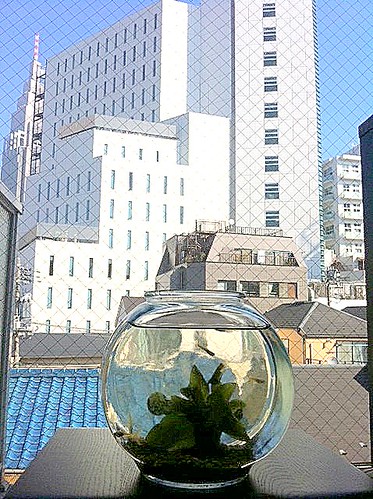My fifth and final digital storytelling assignment is making a haiku in the writing category. Before I present my own piece, let me just explain what the haiku is briefly.
Haiku, known as the shortest form of the poetry in the world, originally started in the 17th century in Japan. It became international in the late 20th century and now people all over the world make haiku of their own. There are several rules in Japanese traditional haiku and many of them are also adopted into the international haiku. The common rules are:
?Use three lines of up to 17syllables.
?Use a season word (kigo).
?Use a cut or kire (sometimes indicated by a punctuation mark) to compare two images implicitly.
 |
| Click here to enlarge |
In this haiku, I attempted to resonate the words “killifish” and “Tokyo” and parallel the situations of the killifish confined in the aquarium and me living in Tokyo surrounded by high buildings and watching the killifish (without referring to myself in the haiku). Japanese killifish (medaka) is categorized in the summer words in traditional haiku, but it’s difficult for many Japanese to understand that connotation today.

